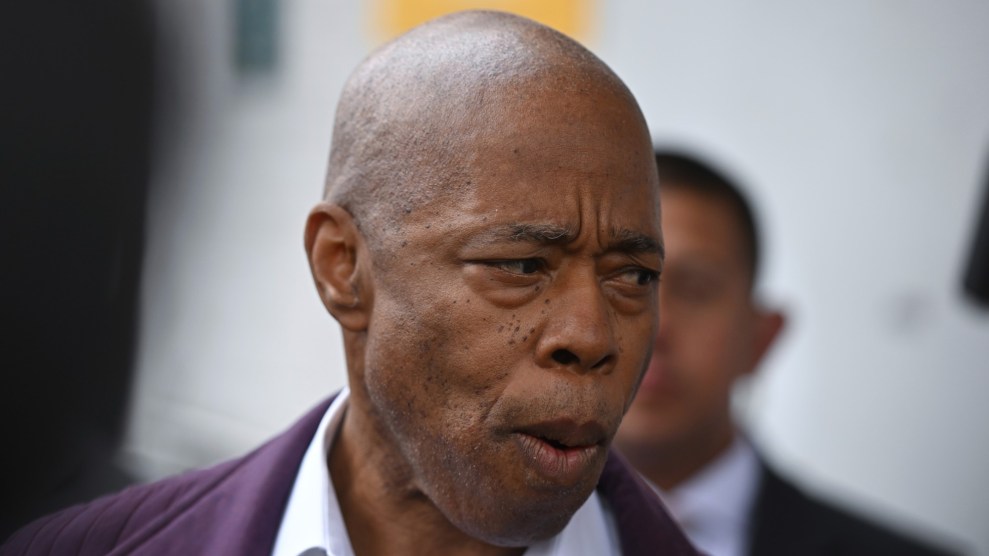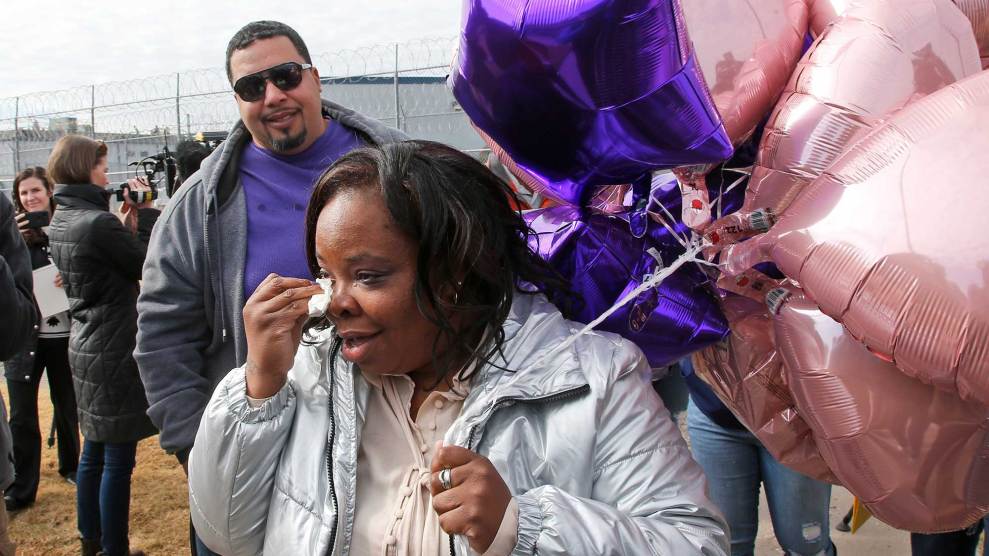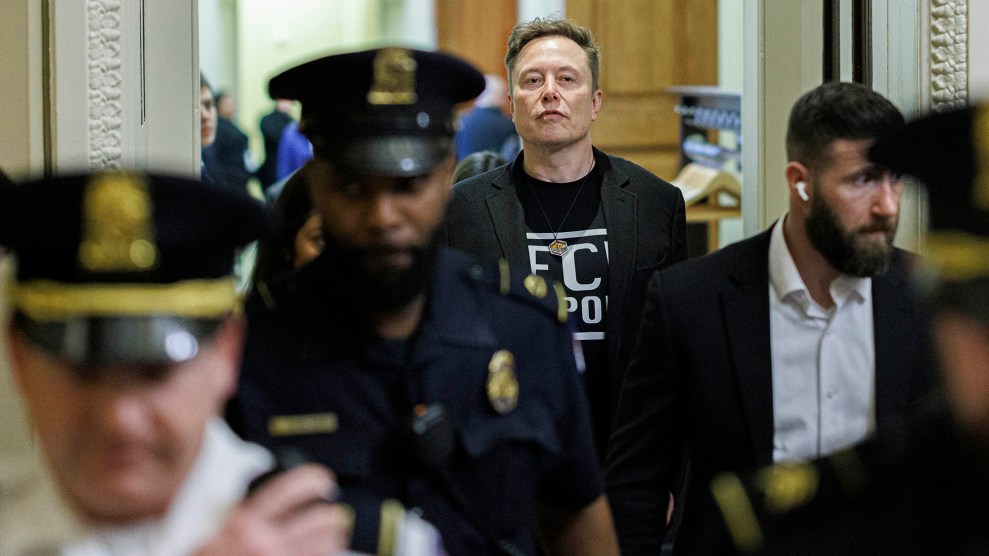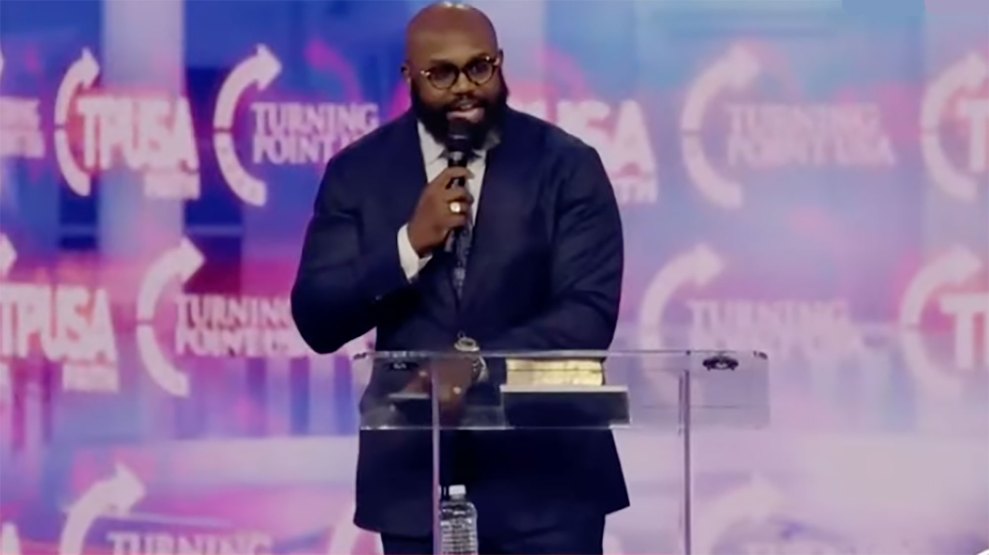
Mother Jones illustration; Getty Images
Twice in one week, Ray Coleman, a teacher at the Tallahassee Federal Correctional Institution, reluctantly had to drop his lesson plans and go to work as a guard. “You show up in the morning and they say, ‘Hey, by the way, here’s your keys and radio—you’re going to work the compound today,” he says.
Because the low-security prison is short on staff, Coleman and his fellow teachers are regularly assigned to work as correctional officers in the units where inmates live. On those days, they either cancel their courses or leave the classroom open for inmates to fill out worksheets, unsupervised. “For the most part they’re just sitting there,” Coleman says.
Teachers aren’t the only ones assigned to guard duty—so are the prison’s nurses, case workers, and even accountants. And it’s not just happening in Florida. Federal prison employees across the country say staffing cuts made by the Trump administration have crippled their ability to provide services to inmates and keep prisons safe. “It’s very dire,” says Valerie Limon, a drug treatment specialist at the Lompoc Federal Correctional Complex in California. (Limon and other prison employees spoke to Mother Jones on behalf of their union, the American Federation of Government Employees Council of Prison Locals.) “Morale at our institution is probably at an all-time low.”
For more than a decade, the Bureau of Prisons (BOP) has run on what it describes as “mission critical” staffing—the minimum number of correctional employees necessary to safely run the 98 facilities it operates. Yet over the past year, federal prisons have dipped far below those numbers, employees say, because the agency has largely stopped filling vacant positions after staffers retire or leave.
It’s about to get worse. In January, the Bureau of Prisons told its facility administrators to expect a 14 percent reduction in their staffing levels, pending congressional approval of President Donald Trump’s 2018 budget. If the spending plan passes, prisons will have to cut the number of positions they are allowed to fill, so many of those vacancies will never be filled.
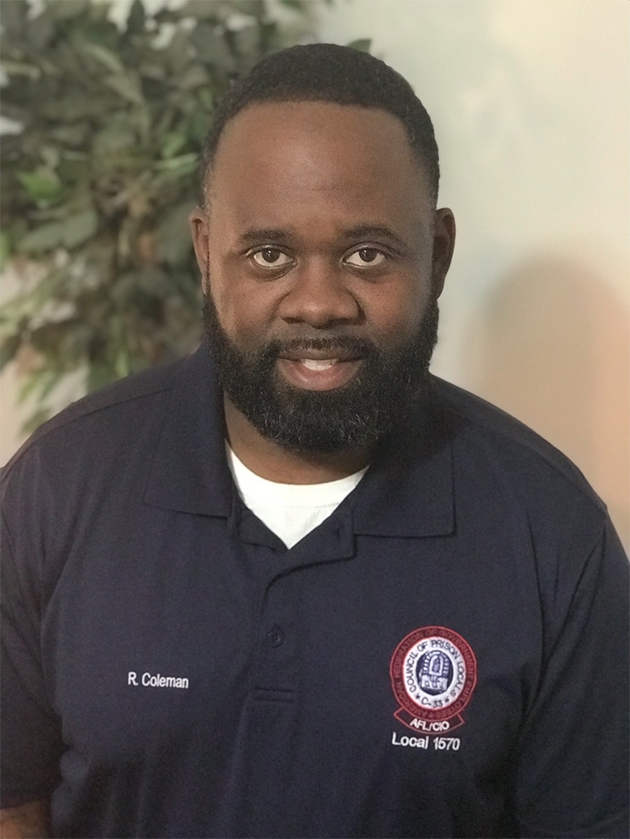
The practice of making prison teachers, nurses, and other non-correctional staffers work as guards, called “augmentation,” started more than a decade ago. Prison employees say it used to happen sporadically, during emergencies or when correctional officers were away at trainings. Now, employees say the practice has become a near-daily occurrence at some facilities. As a result, they say, the wait lists for inmate medical care are growing and classes are being canceled.
Kristan Morgan, a nurse practitioner at FCI Tallahassee, is assigned to work as a guard about once a week, often wearing her scrubs or lab coat in the housing unit. None of her colleagues have time to pick up the slack in her 400-inmate caseload: The prison has just one doctor, two nurse practitioners, and three nurses for more than 800 inmates. “We’re working with bare bones,” she says.
“This is the worst I’ve ever seen it,” says Joe Rojas, who has worked for about two decades in the education department at the Coleman Federal Correctional Complex in Florida, the BOP’s largest correctional complex. Now president of his local union, he recalls periods of low staffing in the past but says there’s no comparison. “That was bad, but not like this.”
“It’s not safe,” adds Ray Coleman, the union president at the Tallahassee prison, who says teachers, nurses, and other staffers feel unprepared to fill in as guards. “We’re overwhelmed,” Morgan says.
Federal prisons have long struggled with low staff numbers. In 2005, after Congress reduced the BOP’s budget, the agency began maintaining the bare-minimum number of employees required to keep facilities safe. After that, the practice of asking prison teachers and nurses to double as guards became a common way to avoid paying overtime to correctional officers.
In 2014, BOP Director Charles E. Samuels Jr. told members of Congress that “decades of inmate population growth [had] outpaced staffing resources,” affecting the bureau’s ability to safely supervise its prisons. The inmate-to-staff ratio had jumped by more than a third from 1997. (As of December 2017, the ratio was 4.2 inmates for every 1 staff member.) “When BOP institution managers use augmentation,” Samuels warned, “the normal duties performed by the augmenting staff may be curtailed or delayed, thereby interfering with the BOP’s ability to provide some inmate programs.”
Teachers and other staffers continued to work as correctional officers under the Obama administration, but prison union members say things took a turn for the worse after Trump was elected. “I may have gone to the housing unit once or twice in my first year and a half, but lately, this last year, someone’s being augmented almost every single day,” Morgan says.
After President Trump lifted the 90-day federal hiring freeze he’d enacted when he took office, the BOP implemented a new requirement that facilities seek approval from the agency’s central office to post a job opening or fill a position, according to union members. Vacancies at many federal prisons currently remain unfilled. The stall in hiring comes during a period of high turnover, as staffers who joined during the 1990s prison boom are coming up for retirement. “Once we leave, our positions won’t be filled,” says Justin Rose, who runs the furniture-building program at FCC Coleman and plans to retire soon.
In July, the Senate Appropriations Committee wrote that it was concerned about the prison hiring freeze. The inmate-to-guard ratio is currently “at a level that is unsafe for staff and should immediately be corrected,” the committee wrote, calling on the agency to “curtail its overreliance on augmentation and instead hire additional full-time correctional staff.” During a House Oversight Committee hearing in December, lawmakers asked the BOP’s new chief, Mark Inch, why the administration wanted to dip below mission-critical staffing levels. “Though I can’t specifically answer on the process that resulted in the mission-critical staffing positions by facility,” said Inch, who had started at the agency three months earlier, “it is certainly a priority [to] relook at our staffing numbers.”
“I want you to relook at that because we’re talking about the safety of people like Eric Williams and his coworkers,” said Rep. Matt Cartwright (D-Pa.), referring to a 34-year-old correctional officer who was stabbed to death while working alone at a federal prison in Pennsylvania in 2013. The president of the prison’s union said that “staffing levels contributed to this death.”
When Trump hosted a meeting on prison reform at the White House in January, he highlighted the role of education and job training in reducing recidivism. “We want to ensure that those who enter the justice system are able to contribute to their communities after they leave prison,” he said.
Federal prison employees claim the recent staffing cuts have led to a reduction in educational programming for inmates. “A lot of our vocational ed classes are really inactive, and that’s because those teachers retired and we weren’t able to hire anybody behind them,” says Coleman, who leads a GED class and a parenting course for inmates. “When you have teachers that are getting pulled up anywhere from two to four times a week, it makes it hard to be a teacher.”
When they start their jobs at federal prisons, teachers, nurses, and other staffers go through three weeks of basic correctional training. But union members say this is not enough to prepare them to work as guards. Unlike teachers and nurses, correctional officers receive a year of probationary training—a chance to learn the ins and outs of working in the housing units.
Prison union members say the shortage of teachers and their assignment to guard duty has led to a drop in the number of prisoners receiving GEDs. During the 2017 fiscal year, 2,667 federal inmates earned a GED, down about 60 percent from the previous year, according to BOP data.
(The Bureau of Prisons notes that it switched from a paper-based GED exam to a computer-based exam in mid-2016, and union members acknowledge this may have played a role in the lower GED completion rates. The agency did not respond to requests for comment about the drop in GED completions.)
Teachers at one of the high-security prisons at FCC Coleman in Florida once boasted one of the system’s top GED completion rates, according to Rojas. He thinks the shortage of teachers has had a serious impact on his students’ performance. Citing data from the prison’s education department, he recalls that nearly 80 inmates earned their degrees during the 2016 fiscal year, but only one did last year.
Rojas joined FCC Coleman’s education team 19 years ago and speaks proudly of the resources he’s helped develop for inmates—the law library, the annual job fairs, the graduation ceremony for students who earn their GEDs. But he worries they won’t survive the Trump administration. He says inmates are already frustrated with the changes in programming: “They don’t want to be locked up with no education.”
“You can hear the rumblings and the complaints,” he adds. He’s afraid the frustration, combined with the extra idle time in housing units when classes are canceled, will boil over. “It’s a Molotov cocktail about to explode,” he says.
The Waseca Federal Correctional Institution in Minnesota hasn’t had a full-time doctor for about two and a half years, says local union president Christopher Campbell, who works in the prison’s food services department. Physician assistants do what they can, but the prison has started more regularly sending inmates to the local hospital.
At FCC Lompoc in California, nurses are exempt from guard duty. But Valerie Limon, vice president of the local union, estimates the medical department only has 75 percent of the employees it’s authorized to have. The Lompoc complex—which includes a low-security prison, a high-security prison, and two correctional camps—is down from three staff psychologists to one, and its two reentry coordinators are sometimes asked to work as guards. “Morale is in the toilet,” Limon says.
The Bureau of Prisons is moving forward with its plans to cut employee levels. “We are currently eliminating several thousand vacant authorized positions,” the BOP said in a statement. “These positions have been identified by the Department of Justice and Congress to be eliminated as part of an effort to ‘rightsize’ the BOP authorized staffing levels in light of the significant decrease in the inmate population we experienced over the last four years.”
Over the past year, the federal prison population dropped about 3 percent. But as of April 2017, federal prisons were operating at about 14 percent over capacity. And the Justice Department has predicted a 2 percent increase in the federal prison population over the next fiscal year.
The Bureau of Prisons said it did not expect the elimination of positions to result in any layoffs, and that it did not think the changes would have a negative impact on its “overall ability to maintain a safe environment for inmates and staff.” The agency has said that the majority of positions it plans to cut are already vacant. “We are eliminating positions but not staff,” it told USA Today. “We continue to hire staff at institutions around the country as needed to further the mission of the Bureau of Prisons.”
In January, a leaked memo from the agency revealed plans to transfer more inmates from government-run facilities to private ones run by companies such as CoreCivic and GEO Group. According to the directive, the move is intended to alleviate overcrowding at government facilities and “to maximize the effectiveness of the private contracts.”
“They’re kind of speaking out of two sides of their mouth—are we overcrowded or not?” says Rose, the furniture foreman at FCC Coleman, who is vice president of his local union. “What we know is this: They plan to underfund us, cut the staffing, create a crisis, and then hire the private prisons to solve the crisis.”
“You have a lot of buyer’s remorse,” says Rojas, the teacher at FCC Coleman. “Because a lot of people who voted for Trump are going to be losing their jobs.”



